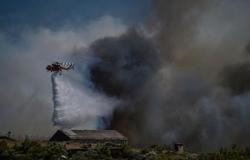Hunting, deforestation and human activity threaten the existence of wild animals. Of the 157,190 species studied, 44,016 are classified as threatened, according to figures from the International Union for Conservation of Nature (IUCN). In doing so, animal rights activists teamed up with researchers from NASA and the European Space Agency (ESA) to identify areas on Earth where these animals would be least endangered.
Tigers, jaguars, elephants… Do you know what these animals have in common? They belong to the red list IUCN Endangered Species List. In France and Overseas alone, more than 2000 species are in danger due, in particular, to poachers and deforestation. To alleviate this massive animal extinction, scientists have found a solution.
Real-time mapping
NASA and ESA have used their satellites to map areas where animals could find safe havenreports the media CNN. In fact, they invented a satellite called “Tiger Conservation Landscapes” (TCL 3.0) capable of observing precisely, sometimes better than ground surveys, the areas where they — animals — are found. Scientists have combined data from Google Earth to create a mapping system highlighting priority areas and distribution of species on Earthin real time. “The map may be updated when new information becomes available. For example, if a researcher in India conducts a survey on the number of tigers in the area, they can share their results on the online mapping system, generating a new version of the map.specifies CNN.
The discovery of new habitat areas for tigers
For the moment, TCL 3.0 has only been tested for the tiger population. It made it possible to identify 226 new habitable zonesof the “restoration landscapes”, for those tigers with enough prey. The researchers, who detailed the results of this experiment in a studyspecify that this new habitat could increase the population of these tigers by 50%. “I don’t think people were aware of how much habitat is in that restoration landscape category, or how much habitat is actually available to tigers that isn’t occupied.”Sanderson, co-author of the study, told CNN.
Scientists are already developing similar monitoring maps for other species such as lions, jaguars and even bison.
You may also be interested in:
Lions, tigers and cheetahs can distinguish two types of human voices
In a mysterious Mayan cave, discovery of human skeletons… and tiger sharks
Tigers have their own personality, new research suggests
In Montpellier, this company wants to create a farm for tiger mosquitoes
Tiger mosquitoes, these passengers who board incognito






